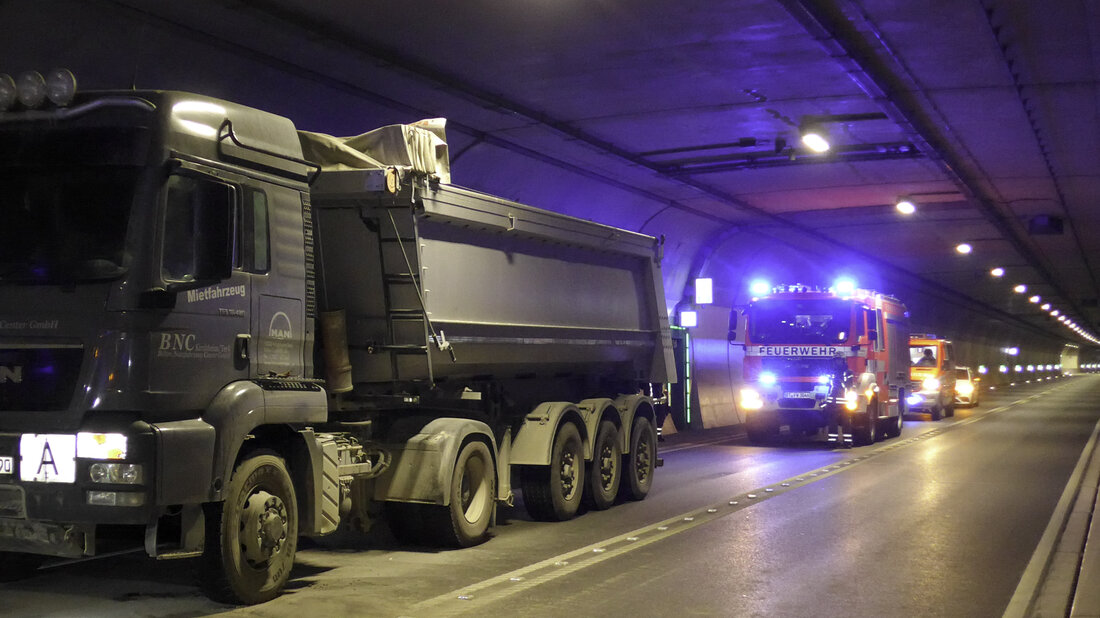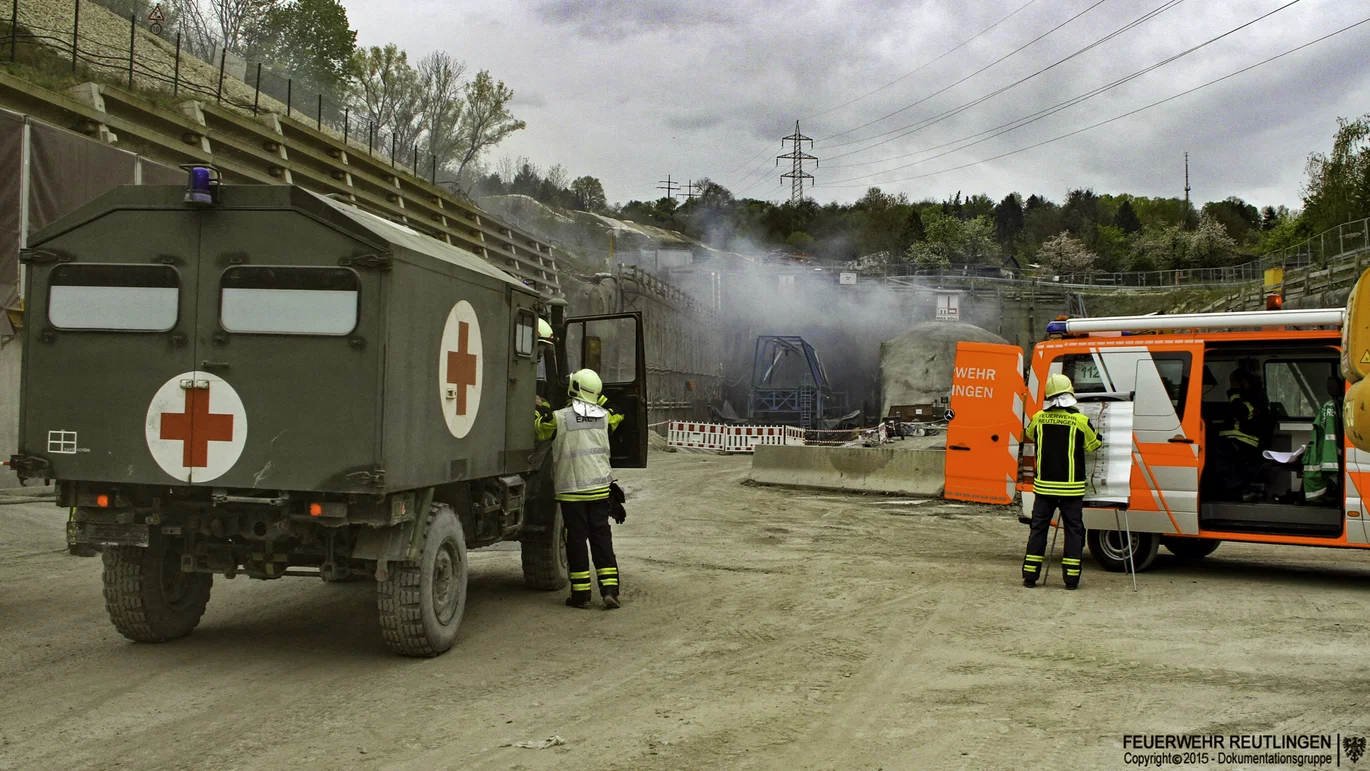Within a very short time, the Fire Service Reutlingen had to prepare itself to provide rescue services for the construction phase of Scheibengipfel Tunnel in Reutlingen. The International Fire Academy supported the fire service by giving its officers the opportunity to quickly familiarise themselves with the special conditions of underground transport systems and practically test their tactics and techniques under operational conditions.
Suddenly a tunnel rescue service
The first plans for the Scheibengipfel Tunnel were drawn up as early as 1967. With a length of 1 900 metres, the single-tube road tunnel was intended to relieve Reutlingen's (D) city centre from the transit traffic of the federal road 312. For this reason, the fire service began planning operations for regular service at an early stage. During the construction phase, however, as is customary in Baden-Württemberg, a private rescue service was to ensure the safety of the workers. However, this service was not available when needed. There was a risk of a considerable delay in the construction work that had already started. That is why the then mayor of Reutlingen, Barbara Bosch, decided that the Reutlingen Fire Service should also take over the tasks of a tunnel rescue service during the construction phase of around five years. «That's the reason,» recalls Fire Chief Harald Herrmann, «why we despite the long planning phase, we very quickly got a tunnel.»
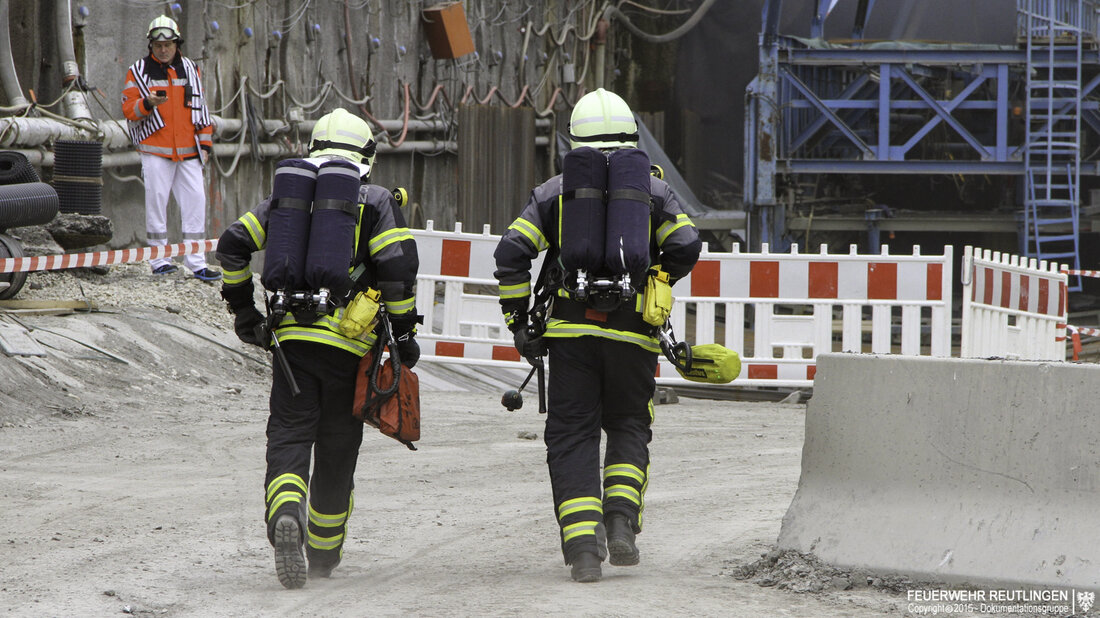
It began with an intensive learning process
This meant that Harald Herrmann and his officers were faced with a huge task, for which there was no blueprint for dealing with it. «Standard reaction patterns weren't enough,» says Harald Herrmann, «we had to find a solution specially tailored to Reutlingen.» That is why he formed a project group that, with Hartmut Möck, Michael Reiter, Adrian Röhrle, Hans Wezel and Martin Reicherter, was able to cover all specialist areas, from fire fighting technology and civil engineering to geological and contractual issues. Soon a first general concept was created, which also incorporated the experiences of other fire services. However, Reutlingen's firefighters had to develop the details themselves. For this purpose, the vehicle bays and road underpasses were used as test tunnels in order to be able to try out the planned procedures in practice. Herrmann explains, «It was an intensive learning process in which we continuously tested, developed and improved.»
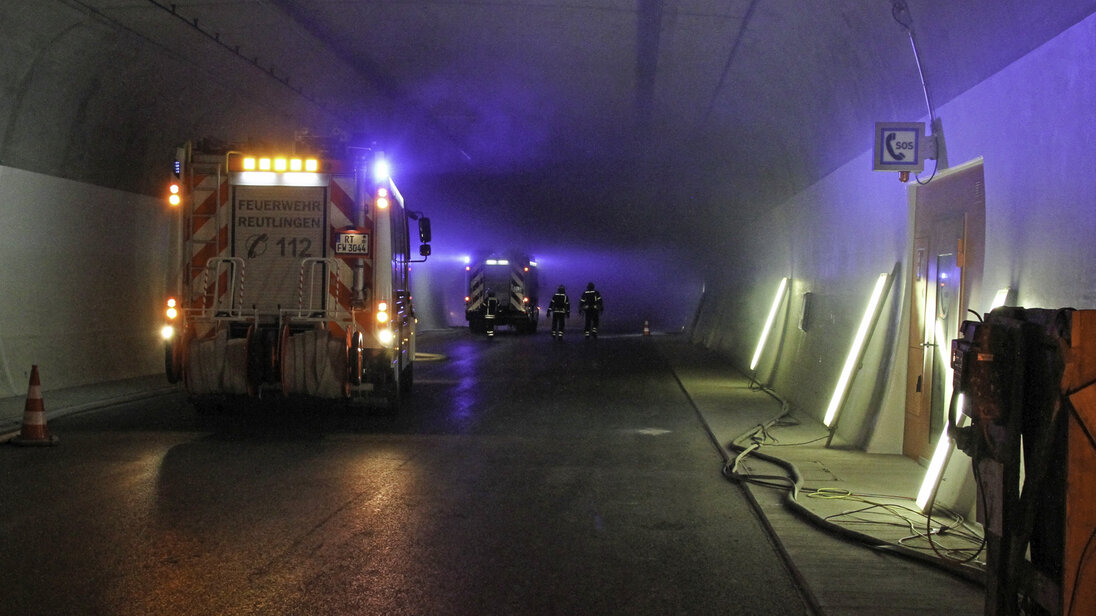
Helping to find the solution
The International Fire Academy also had no one-size-fits-all solution for the specific tasks of the Reutlingen tunnel project but was able to support it through systemic organisational consulting. This is precisely not to be understood as creating a ready-made operational concept for a fire service and to carry out the corresponding training programmes. Instead, the basic idea of the systemic approach is that the organisation concerned can only find the right solutions for itself. However, this process can be supported, for example, by making our training tunnel facilities and the Tactics Centre available more or less like laboratories and moderating the often intense discussions. In our experience, for example, it has proven useful to involve as many officers as possible in the development of facility-specific tactics and in the operational planning from a certain planning stage. In this way, the entire system, with all its complex communication relationships, for example, between different rank levels or divisions, is included. The result is not what individuals have come up with, but a jointly developed and coordinated concept that fits precisely with the respective fire service and precisely to the respective tunnel – and can therefore find broad acceptance among all participants.
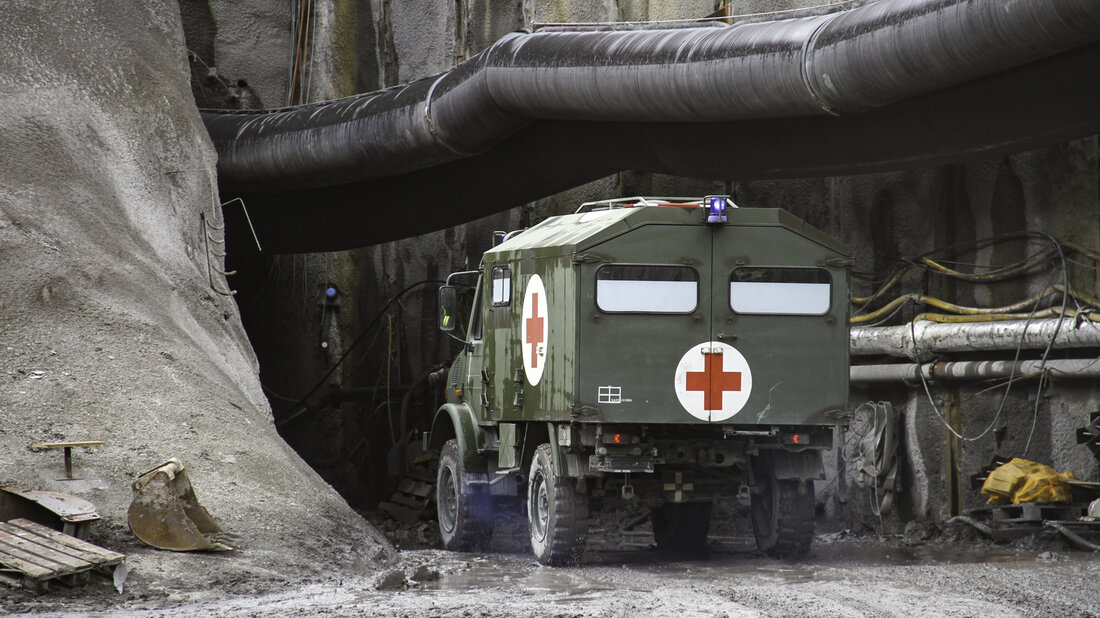
With the turntable ladder to the tunnel?
The systemic approach is also helpful because the tunnel task domain cannot be considered in isolation but must be fitted into the existing overall system. Harald Herrmann cites technology as an example of this. «It was not just a question of whether rebreathers or twin-bottle breathing apparatuses are better, but what fits in with the existing vehicles, training, the existing alarm and deployment order, and the neighbouring fire services to be involved.» Countless questions that only the concerned fire service can answer themselves and that were therefore discussed in detail (among other occasions at a four-day workshop in Balsthal) and, which was expressly requested, sometimes controversially. However, and this was decisive: Since all workshop participants were involved in the development, everyone knew the background and arguments for the decisions made in each case. For example, that (in the initial planning) the turntable ladder should also be deployed to a tunnel incident - because the mobile fan is loaded on it.
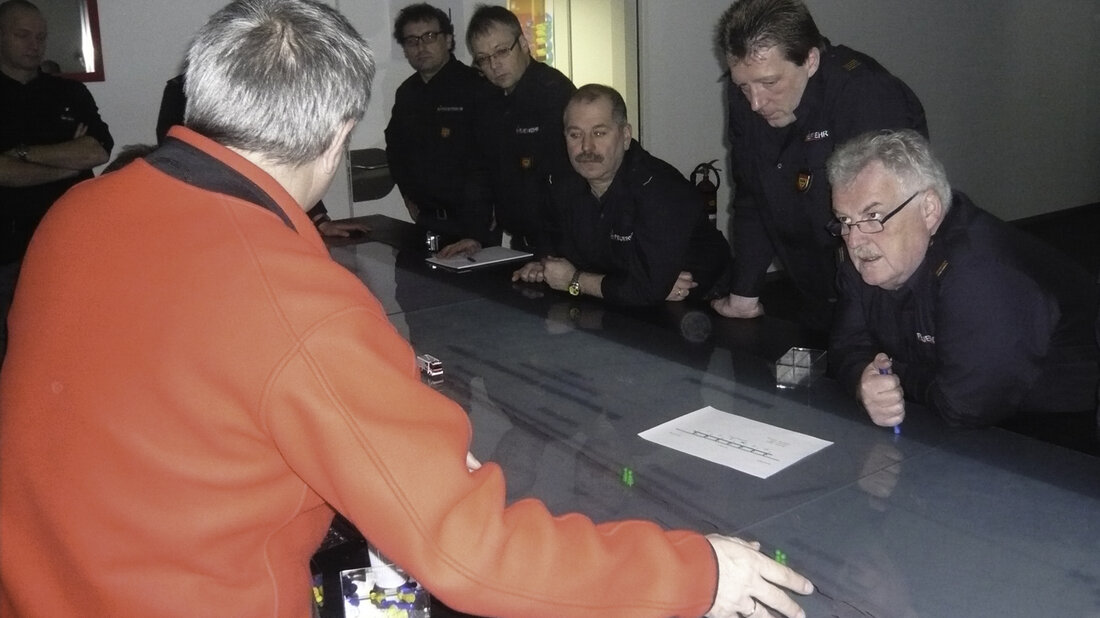
Operational and training planning in one
Systemic work is labour-intensive but overall more effective and efficient than if the planning work is delegated to individual specialists. On the one hand, operational concepts must be controversially discussed one way or another; only if they are understood and accepted will they actually be implemented in an emergency. On the other hand, no one can consider all aspects alone: many minds can think of more than one alone. In addition, a large part of the training work is already carried out in such a workshop: What the participants work out together, they can internalise better than if they were only given ready-made engagement rules. Harald Herrmann considered it particularly helpful that «virtually everyone always had the same level of knowledge during the entire development phase.»
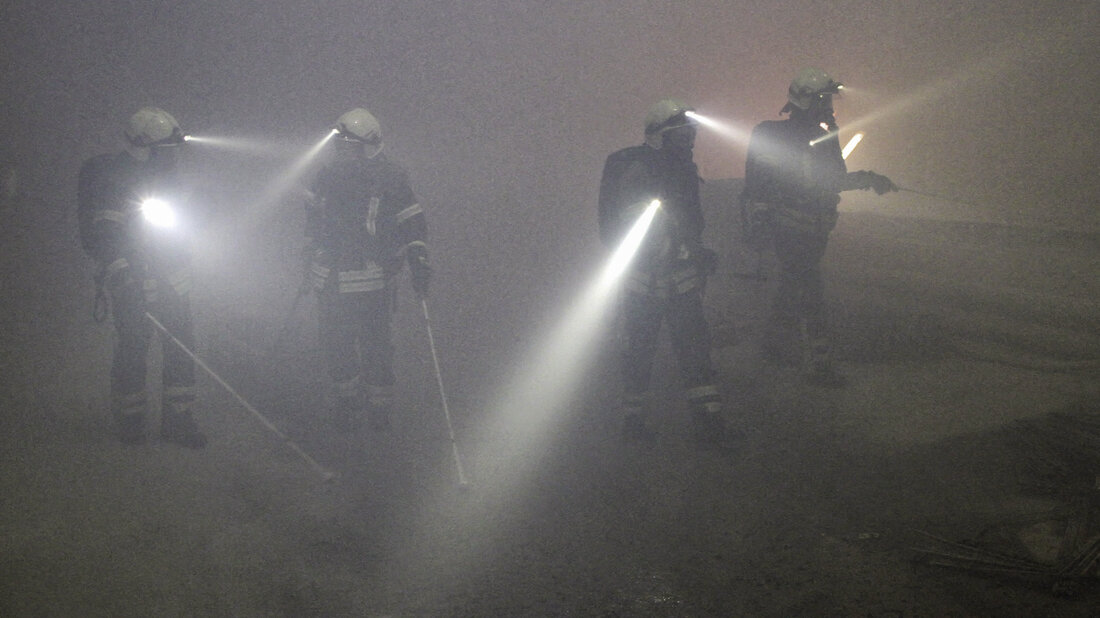
Enabling a «tunnel experience»
Systemic organisational consulting also includes allowing firefighters to experience working in underground transport systems with all their senses. This applies particularly to fire services dealing with the intervention in tunnels for the first time. For this reason, the tactics developed with the table-top technique were practically tested in the road training tunnel in Balsthal. The participants not only got to know firefighting, search & rescue techniques and to familiarise themselves with the tunnel world. They also gained many insights that they could use for their own further development of their tactics, e.g. the insight that even in smaller incidents, a large number of emergency personnel are required in order to be able to carry out both firefighting and search & rescue at the same time and also to be able to provide safety for their own personnel adequately.
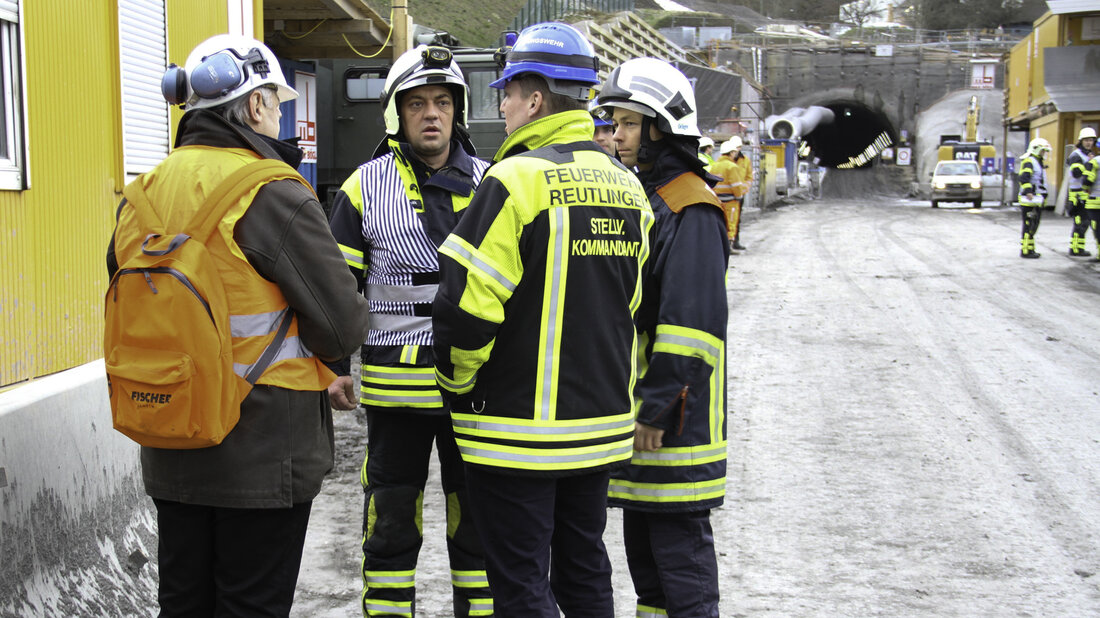
Tunnel rescue service as a special challenge
Fire protection and technical assistance during the construction phase are considered incredibly delicate tasks. The site conditions change almost daily as construction progresses. There is less safety infrastructure available than in the later regular service. The Reutlingen fire service had to react flexibly to this: A special rescue vehicle was designed and built. Transponders were used to monitor people. The correct handling of rescue containers was trained. Furthermore, it was necessary to prepare for unusual situations: During blasting and excavation in the Scheibengipfel Tunnel, methane gas stored in the rock was released several times, which can create explosive gas mixtures.
In order to be able to react correctly to such situations, the Fire Service Reutlingen sought close contact with the construction management. On-site meetings and inspections took place at least monthly, as well as numerous training drills. Harald Herrmann: «We have learned what makes miners think, and they have learned how firefighters think.» This resulted in a collegial relationship, thanks to which even critical situations could be successfully mastered together, for example, when the tunnel had to be evacuated quickly after methane outbreaks until the gas had evaporated.
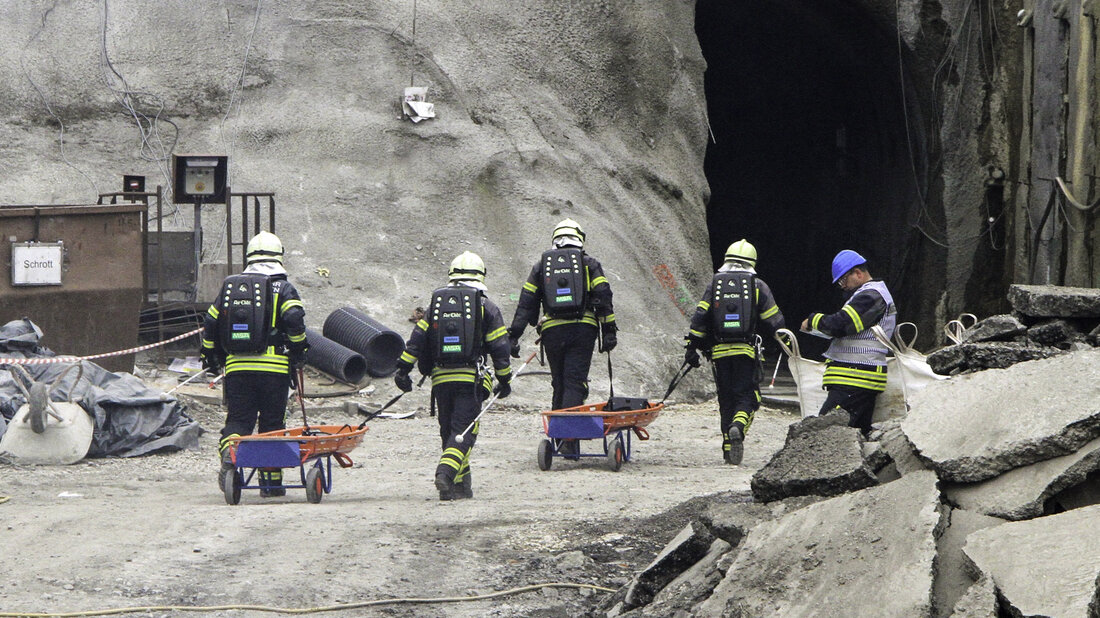
Conclusion: Let people learn
Although Harald Herrmann was initially somewhat sceptical about the task of providing a tunnel rescue service, he is delighted with the final result: «Taking on the tasks of the tunnel rescue service at the Scheibengipfeltunnel and the training required for this have had a very positive impact on the day-to-day work of the fire service. Our firefighters move with more safety today, for example, in basement or underground garage fires.»
From the International Fire Academy's point of view, the cooperation with the Reutlingen Fire Service was extremely instructive, because for the first time, all tasks relating to deployment preparation, both for the construction phase and for regular service, were combined in one training program. The common conclusion: Learning must be done by the organisations and their members themselves - but they can be supported by providing them with learning and experience worlds specifically tailored to their needs.
